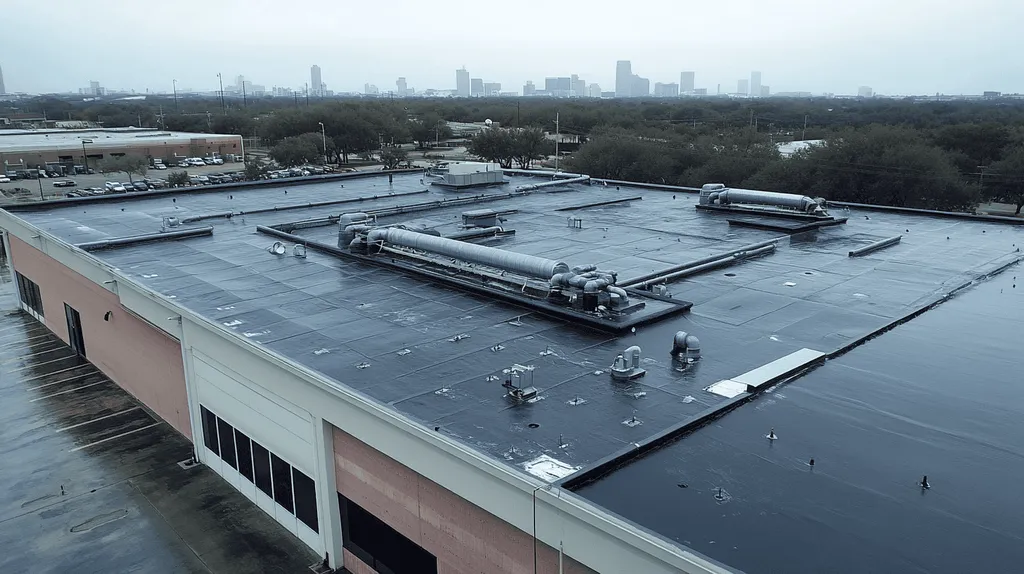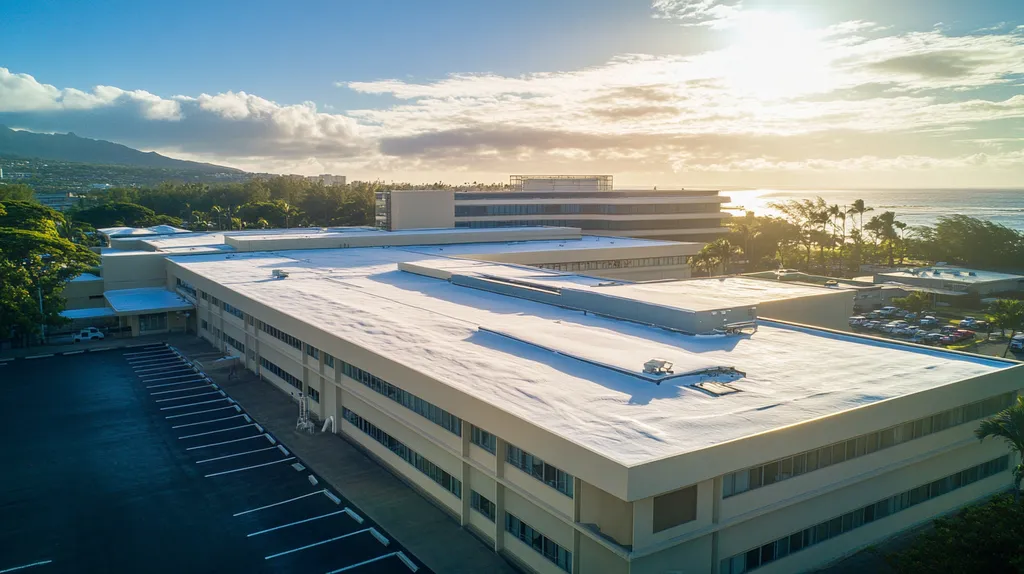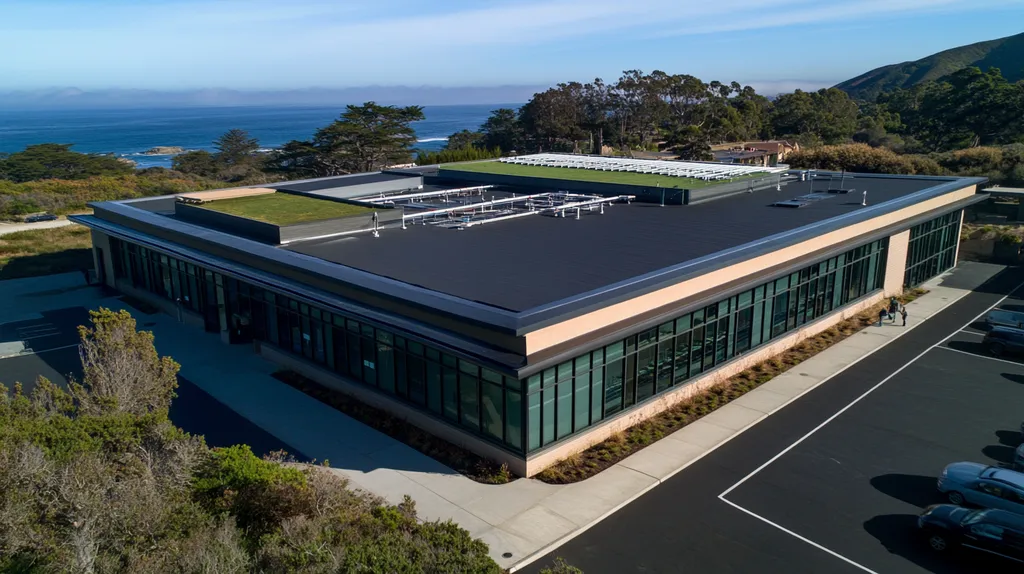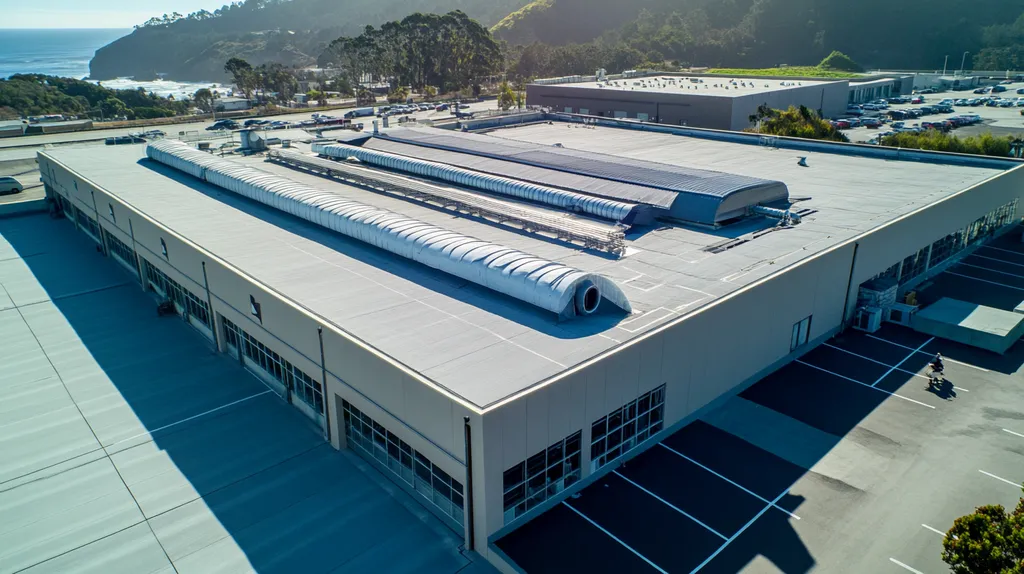Welcome to today’s Battle Royale featuring two roofing heavyweights: “Reflective Coatings” in the east corner versus “Insulative Coatings” in the west!
Tonight’s showdown pits these contenders against each other across six punishing rounds designed to test every aspect of their performance for Industrial Roof Coating.
At stake? Millions in potential costs, decades of building protection, and the critical performance demands of modern commercial and industrial facilities.
Our professional judging panel will evaluate each round on technical merit, real-world performance, and value delivery. After all six rounds, we’ll declare our ultimate champion.
Ladies and gentlemen, facility managers and building owners… it’s time to rumble!
ROUND 1: INITIAL COSTS & INSTALLATION
Property owners face mounting pressures to optimize their roofing investments amid escalating energy costs and extreme weather conditions. The selection between reflective and insulative coatings represents a critical decision point that impacts both immediate expenses and long-term facility performance. Understanding the nuances of materials, installation requirements, and project execution can mean the difference between a successful roofing investment and a costly mistake.
Material Expenses
Silicone-based reflective coatings dominate the premium market segment, featuring high solids content between 80% and 95% that creates an exceptionally durable protective layer. These materials maintain their flexibility and performance across extreme temperature ranges from -40°F to 350°F, justifying their higher initial cost. (source: Karnak Corp)
Insulative coatings typically utilize more conventional materials and formulations, resulting in lower material costs at the point of purchase. However, their reduced durability often necessitates more frequent reapplication and maintenance interventions.
While both options serve important roles in the roofing industry, the superior longevity and performance of reflective coatings can extend a roof’s lifespan by up to 20 years, offsetting the higher initial investment.
Reflective coatings claim the clear “ADVANTAGE” in material value despite higher upfront costs.
Installation Complexity
The installation process for reflective coatings demands precise surface preparation and application techniques. These requirements often necessitate specialized equipment and highly trained installation teams, driving up labor costs.
Insulative coatings offer more forgiving application parameters and can be installed by a broader range of qualified contractors. This flexibility typically results in more competitive labor rates and easier scheduling.
The simpler application process of insulative coatings reduces the risk of installation errors, though proper attention to detail remains crucial for optimal performance.
Insulative coatings secure the “ADVANTAGE” in installation complexity.
Project Timeline
Reflective coating installations require specific environmental conditions and longer curing periods. These requirements can extend project timelines, particularly in regions with variable weather patterns.
In contrast, insulative coatings generally allow for more flexible installation windows and faster completion times. This advantage becomes particularly significant for facilities where minimizing operational disruption is crucial.
The ability to complete projects more quickly with insulative coatings can significantly reduce facility downtime and associated costs. This efficiency benefit often proves decisive for time-sensitive projects.
Insulative coatings earn the “ADVANTAGE” for project timeline efficiency.
ROUND 1 WINNER: INSULATIVE COATINGS
ROUND 2: DURABILITY & LIFESPAN
As extreme weather events become more frequent, the durability of industrial roof coatings faces unprecedented challenges. When roofing systems fail prematurely due to thermal stress and seasonal changes, facility operations can grind to a halt, resulting in substantial financial losses. Understanding how different coating types perform under harsh conditions is crucial for making informed investments that protect both buildings and bottom lines.
Weather Resistance Performance
Just as buildings need to adapt to seasonal changes, roofing systems must evolve to handle increasingly extreme weather conditions. Commercial facilities require coating solutions that can withstand both scorching summers and freezing winters while maintaining their protective properties. (source: Inland Coatings)
Reflective coatings excel in high-temperature environments, effectively reducing thermal shock and UV damage. Their specialized formulations help prevent cracking and peeling during extreme temperature fluctuations, though performance can degrade over time in harsh conditions.
Insulative coatings provide superior protection against freeze-thaw cycles and moisture infiltration. Their thicker application creates a more robust barrier against physical damage from ice, hail, and debris impact.
For overall weather resistance, insulative coatings claim the “ADVANTAGE” due to their superior performance across diverse climate conditions.
Maintenance Requirements
Reflective coatings typically require regular cleaning to maintain their solar reflective properties. Surface contamination can significantly reduce their effectiveness, necessitating periodic maintenance to ensure optimal performance.
While insulative coatings may show visible wear over time, their protective properties remain largely intact even with minimal maintenance. Their resistance to physical damage means fewer repair interventions are needed throughout their service life.
The reduced maintenance burden of insulative coatings translates to lower long-term costs and fewer facility disruptions. This practical advantage becomes particularly significant for large industrial facilities.
Insulative coatings secure the “ADVANTAGE” in maintenance requirements.
Long-Term Cost Effectiveness
Reflective coatings often require reapplication every 10-15 years, depending on environmental exposure. While they provide excellent energy savings, the cumulative cost of maintenance and reapplication must be factored into long-term planning.
Insulative coatings generally maintain their performance for 15-20 years with proper installation. Their durability reduces the frequency of major repairs and extends the overall lifespan of the roofing system.
When considering total lifecycle costs, including maintenance, repairs, and replacement, insulative coatings demonstrate superior value. Their longer service life and reduced maintenance requirements offset higher initial costs.
Insulative coatings earn the “ADVANTAGE” in long-term cost effectiveness.
ROUND 2 WINNER: Insulative Coatings
ROUND 3: PERFORMANCE FACTORS
As climate patterns become more extreme, industrial facility managers face mounting pressure to optimize their roofing systems for both scorching summers and frigid winters. The right coating choice can mean the difference between manageable energy costs and budget-breaking utility bills. Understanding how different coatings perform across temperature extremes has become essential for protecting both buildings and operational efficiency.
Heat Reflection and Energy Savings
The elastomeric coatings segment now dominates the industrial roofing market, accounting for over 67% of revenue share due to superior thermal performance and energy efficiency. These specialized formulations are driving rapid market growth as facilities seek better temperature control solutions. (source: Grand View Research)
Reflective coatings create a highly effective barrier against solar radiation, reducing roof surface temperatures by up to 80°F during peak summer conditions. This dramatic temperature reduction translates directly to lower cooling costs and reduced strain on HVAC systems.
While insulative coatings provide some thermal resistance, their primary mechanism focuses on reducing heat transfer rather than reflecting it. This makes them less effective at preventing heat buildup during intense summer conditions.
Reflective coatings claim the clear “ADVANTAGE” for heat management and energy efficiency.
Cold Weather Performance
Winter conditions create unique challenges for roofing systems, testing their ability to maintain consistent internal temperatures while resisting damage from freeze-thaw cycles. The thermal stability of coating systems becomes crucial during extended cold periods.
Insulative coatings excel in cold environments by creating an effective thermal barrier that helps maintain indoor temperatures. Their composition allows them to remain flexible even in sub-freezing conditions, reducing the risk of cracking or separation.
Reflective coatings, while excellent for summer conditions, offer limited benefits during winter months. Their primary function of reflecting solar radiation becomes less relevant when heating rather than cooling is the priority.
Insulative coatings secure the “ADVANTAGE” for cold weather performance.
Temperature Stability Performance
Daily and seasonal temperature fluctuations put tremendous stress on roofing systems. The ability to maintain consistent performance across wide temperature ranges determines long-term durability and effectiveness.
Reflective coatings maintain their protective properties across extreme temperature ranges, helping stabilize building temperatures throughout the year. Their resistance to UV degradation ensures lasting performance even with constant exposure.
Insulative coatings can become less effective as temperatures fluctuate dramatically, potentially leading to reduced performance over time. Their thicker application makes them more susceptible to thermal expansion and contraction stress.
Reflective coatings earn the “ADVANTAGE” in temperature stability.
ROUND 3 WINNER: REFLECTIVE COATINGS
ROUND 4: MAINTENANCE REQUIREMENTS
With commercial facilities facing unprecedented temperature extremes, proper maintenance of roof coatings has become critical for long-term building protection. The elastomeric coatings segment now dominates 67.1% of the industrial roofing market, highlighting the growing importance of selecting systems that balance performance with maintainability. Understanding these maintenance requirements helps facility managers protect their investment while optimizing energy efficiency. (source: Grand View Research)
Surface Cleaning Requirements
Reflective coatings demand regular surface cleaning to maintain their solar reflective properties. Dust, organic matter, and industrial pollutants can significantly reduce their effectiveness, requiring quarterly inspections and annual professional cleaning.
The accumulation of surface contaminants can decrease reflectivity by up to 30% within the first year if left uncleaned. This degradation directly impacts energy efficiency and accelerates coating wear, potentially leading to premature failure.
Insulative coatings typically require only basic debris removal and annual inspections. Their performance remains largely stable even with minimal cleaning, as their primary function doesn’t rely on surface reflectivity.
Insulative coatings claim the “ADVANTAGE” for surface cleaning requirements.
Repair and Touch-up Needs
Reflective coatings often show visible wear patterns in high-traffic areas and around roof penetrations. These areas require regular touch-ups to maintain consistent protection and performance.
Early detection and repair of damaged areas is crucial for reflective systems, as even small breaches can compromise their effectiveness. This necessitates more frequent inspection cycles and swift intervention when issues are found.
Insulative coatings demonstrate superior durability against mechanical damage and typically require fewer repairs. Their thicker application provides better resistance to punctures and abrasion, reducing the frequency of touch-up work.
Insulative coatings secure the “ADVANTAGE” in repair requirements.
Long-term Maintenance Planning
Reflective coating systems need comprehensive maintenance programs that include regular cleaning, inspection, and periodic recoating. This structured approach helps maintain their energy-saving benefits but requires significant ongoing investment.
Facility managers must budget for specialized cleaning equipment, trained personnel, and potential production disruptions when maintaining reflective systems. The complexity of maintenance operations often necessitates professional service contracts.
Insulative coatings offer more straightforward maintenance requirements that can often be handled by in-house teams. Their forgiving nature and stability reduce the need for specialized maintenance procedures or frequent interventions.
Insulative coatings earn the “ADVANTAGE” in maintenance planning.
ROUND 4 WINNER: INSULATIVE COATINGS
ROUND 5: SUSTAINABILITY CREDENTIALS
The urgency for sustainable roofing solutions has never been greater as commercial facilities face increasing environmental regulations and rising energy costs. The elastomeric coatings segment now dominates 67.1% of the industrial roofing market, driven by demands for energy efficiency and environmental responsibility. Facility managers must carefully weigh how different coating options impact both their environmental footprint and operational sustainability. (source: Grand View Research)
Environmental Impact
Modern industrial facilities must balance immediate operational needs with long-term environmental responsibility. The choice of roofing coating directly impacts both local ecosystems and broader climate considerations.
Reflective coatings significantly reduce the urban heat island effect by deflecting solar radiation away from buildings and surrounding areas. Their high solar reflectance index (SRI) values help maintain cooler ambient temperatures, benefiting both the immediate environment and neighboring properties.
Insulative coatings focus on thermal retention rather than reflection, potentially contributing to increased ambient temperatures in urban areas. While they excel at preventing heat loss, their environmental benefits are more limited in scope.
Reflective coatings claim the “ADVANTAGE” for environmental impact.
Energy Efficiency
Energy consumption represents a critical sustainability metric for commercial properties. The effectiveness of roofing coatings in reducing HVAC loads directly impacts a facility’s carbon footprint.
Reflective coatings dramatically reduce cooling requirements during peak summer conditions. Their ability to maintain lower roof surface temperatures translates to reduced energy consumption and smaller carbon emissions.
Insulative coatings provide steady thermal resistance but may require additional cooling energy in warm climates. Their performance can actually increase energy usage when cooling demands outweigh heating needs.
Reflective coatings secure the “ADVANTAGE” in energy efficiency.
Material Lifecycle
The environmental impact of roofing materials extends from manufacturing through disposal. Sustainable solutions must consider the entire lifecycle of coating systems.
Reflective coatings typically require fewer raw materials during manufacturing and can often be recoated rather than completely replaced. Their longer service life reduces waste and minimizes the environmental impact of frequent replacements.
Insulative coatings generally require more material volume and may need more frequent replacement in extreme conditions. Their thicker application profile increases both material consumption and eventual disposal requirements.
Reflective coatings earn the “ADVANTAGE” in material lifecycle considerations.
ROUND 5 WINNER: REFLECTIVE COATINGS
ROUND 6: SPECIALIZED APPLICATIONS
As industrial facilities grapple with increasingly extreme weather patterns, the specialized application needs for roof coatings have become more critical than ever. The elastomeric coatings segment now dominates 67.1% of the industrial roofing market, driven by demands for superior performance across diverse environmental conditions. Facility managers must carefully evaluate how different coating options perform in their specific operating environments to protect both their buildings and their bottom lines. (source: Grand View Research)
High-Temperature Performance
Industrial facilities in hot climates face unique challenges as roof surface temperatures can soar above 180°F during peak conditions. These extreme temperatures accelerate coating degradation and can compromise structural integrity without proper protection.
Reflective coatings excel in high-temperature environments by deflecting up to 85% of solar radiation. Their specialized formulations maintain flexibility and adhesion even under intense UV exposure, preventing premature aging and deterioration.
Insulative coatings struggle in extreme heat, often becoming less effective as temperatures rise. Their focus on heat retention rather than reflection can actually compound thermal stress on the roofing system during prolonged hot periods.
Reflective coatings claim the clear “ADVANTAGE” for high-temperature applications.
Cold Climate Applications
Facilities in cold regions must protect against freeze-thaw cycles, ice formation, and thermal shock. The wrong coating choice can lead to devastating failures during winter conditions.
Reflective coatings provide limited benefits during cold weather operations. Their primary function of solar reflection becomes less relevant when heating efficiency is the priority.
Insulative coatings demonstrate superior performance in cold environments by maintaining consistent thermal resistance. Their composition helps prevent condensation and ice dam formation while reducing heat loss through the roof structure.
Insulative coatings secure the “ADVANTAGE” for cold climate applications.
Chemical Exposure Resistance
Industrial environments often expose roofing systems to harsh chemicals, pollutants, and environmental contaminants. These exposures can rapidly degrade coating performance without proper chemical resistance.
Reflective coatings typically feature advanced chemical resistance properties that protect against industrial emissions and acid rain. Their dense surface structure helps prevent chemical penetration and maintains reflective properties even under harsh conditions.
While insulative coatings offer some chemical protection, their porous nature can make them more susceptible to chemical degradation over time. This vulnerability may require more frequent maintenance and replacement in industrial settings.
Reflective coatings earn the “ADVANTAGE” in chemical exposure resistance.
ROUND 6 WINNER: REFLECTIVE COATINGS
AND THE WINNER IS…
After six grueling rounds of technical evaluation, we have our verdict! With a score of 3 rounds to 3, ladies and gentlemen, we declare this championship match… A DRAW!
In this epic showdown, each contender demonstrated commanding strengths in their specialty domains. Reflective coatings dominated the sustainability arena, crushed the high-temperature performance category, and delivered knockout energy efficiency results. Meanwhile, insulative coatings proved unbeatable in maintenance requirements, showed superior durability, and demonstrated remarkable cost-effectiveness over time.
The split decision reflects a crucial truth in industrial roofing: climate zones and facility requirements often determine the true champion. Southern facilities with high cooling demands should lean toward reflective coatings, while northern properties may find insulative coatings deliver superior performance.
Remember, every building presents unique challenges that can impact coating performance. Local weather patterns, facility operations, and specific roof characteristics all play crucial roles in determining the optimal solution. Professional roofing consultants should always evaluate individual property requirements before making final recommendations.
In the high-stakes arena of industrial roofing, victory doesn’t go to the flashiest contender – it goes to the solution that best matches your facility’s specific needs and challenges. Choose your champion wisely!
FREQUENTLY ASKED QUESTIONS
Q. What are initial costs for a commercial roof coating?
A. Initial costs for a commercial roof coating can vary significantly based on material type and installation complexity. Reflective coatings tend to have higher material expenses but may offer better long-term value through energy savings. It’s important to assess both upfront costs and potential long-term performance to make an informed decision.
Q. How do industrial roof coatings perform in durability?
A. Durability depends on the specific coating selected and the environmental conditions it faces. Insulative coatings often outperform reflective options in extreme weather, particularly in cold climates. It’s essential to choose a coating that withstands your region’s climate to maximize lifespan and reduce premature failures.
Q. How do temperature extremes affect commercial roof coatings?
A. Temperature extremes can stress roof coatings, leading to cracks, peeling, or reduced energy efficiency. Reflective coatings excel in hot conditions by minimizing heat absorption, while insulative coatings provide better performance in cold climates. Selecting the right type for your regional temperatures is crucial for longevity.
Q. What maintenance is required for industrial roof coatings?
A. Maintenance needs vary between coating types; reflective coatings often require regular cleaning to retain energy efficiency, while insulative coatings demand less attention. A clear maintenance plan improves long-term performance and reduces costly repairs. Evaluate your facility’s demands to create the right maintenance strategy.
Q. How do sustainability credentials impact roof coating choices?
A. Sustainability credentials are increasingly important as they affect a facility’s environmental impact and operational costs. Reflective coatings reduce energy consumption and urban heat island effect, aligning with green building initiatives. It’s important to assess the ecological implications of your coating decision alongside performance factors.
Q. Do industrial roof coatings resist chemical exposure?
A. Chemical exposure can degrade roofing systems, so selecting a coating with good chemical resistance is essential. Reflective coatings typically offer better protection against pollutants and contaminants, whereas insulative coatings may be more susceptible to damage, necessitating a careful evaluation of your site’s needs.
Q. What specialized applications are needed for roof coatings?
A. Different environments require specific coating applications for optimal performance. High-temperature applications benefit from reflective coatings for heat management, while insulative coatings are ideal for cold climates to prevent heat loss. Assessing your facility’s unique conditions will guide the choice of coating best suited for protection.











